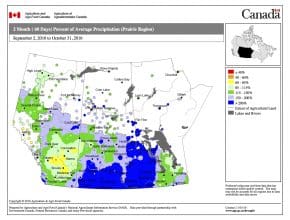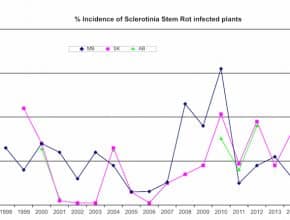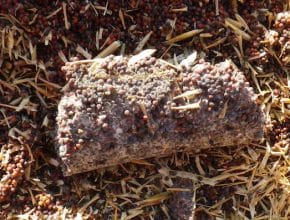Home / Canola Watch / December 9, 2016 - Issue 30
-
Growers were optimistic through most of 2016, due in large part to an early start and decent moisture during crop establishment. Crops were thick and lush through June and July and record tonnage and Prairie-average yields seemed possible. But high yield potential meant high sclerotinia stem rot risk and by harvest, our number one disease was showing its damage. Fields…
-
Results from the disease survey show increases in sclerotinia stem rot incidence. Blackleg incidence is down from 2015 in Manitoba and Saskatchewan and up in Alberta…
-
Steam coming out of bin doors or snow melting off one bin while remaining on others is a quick clue — but don’t use these as your only indicators! Spoilage usually starts small. Even with temperature cables, start points are not always detected until some of the grain is already damaged…
-
If leaving bags for the winter, watch them regularly. Feel them for warm temperatures. Probe them if possible. Tape up any holes that may occur due to wildlife or any other damage. Spoilage in bags often starts around holes…
-
While placing canola seed orders this winter, consider these questions: How much seed do you need? What seed treatment to use? What varieties best suit your needs?…
-
2016 Canola Performance Trial small-plot data on yield, height, lodging and days to maturity is also available in the searchable database at canolaperformancetrials.ca…





